The Broad Museum in downtown Los Angeles, California, is hosting an exhibition on the American flag as part of the institution’s “reckoning with racism in our culture, our institutions, and ourselves.”
The “reckoning” emerged in the moral panic that accompanied the Black Lives Matter riots of 2020, when the murder of George Floyd by police in left-liberal Minneapolis, Minnesota, inspired the burning and looting of the commercial district not too far from where the museum sits.
It also provoked racial angst within museums and elite cultural institutions, as well as in corporate boardrooms and (virtual) university classrooms.
It was an atmosphere of terror and confusion: half the country, led to believe that the election of Donald Trump was the revival of the Third Reich, and despairing — before the coronavirus pandemic — that an aging racist like Joe Biden could defeat him, staged an anguished Cultural Revolution that rattled the foundations of the nation itself.
The exhibit at the Broad, titled This Is Not America’s Flag, claims to “engage in a conversation” about America that reflects “a complex narrative.”
The theme of that “conversation,” however, is crude and simplistic, declaring the country guilty of “white supremacy,” tossing around terms like “white terrorism and privilege” in a museum endowed by a billionaire who was born to a poor, socialist Jewish immigrant family in the Bronx and made his fortune building affordable homes for the postwar middle class.
Still, there are some very interesting pieces in the exhibit, notably two by Hank Willis Thomas.
In one, Thomas uses the red and white stripes of the flag to spell the word “America” in a pattern reminiscent of prison uniforms, a protest against the criminal justice system. In the other, 15,580 (2017), he turns the blue portion of the flag into a memorial for all the victims of “gun violence” in one year.
There is a tension between the two: surely some of the perpetrators of “gun violence” belong in prison?
There are some other memorable pieces as well. The Indian Congress, by Wendy Red Star, is an installation commemorating a historic gathering of Native American leaders in Nebraska in 1898.
Like David Hammons’s African-American Flag (1990), which substitutes red, green, and black for the red, white, and blue, Red Star’s piece challenges and expands our notions of patriotism — without reducing the country to a caricature of evil.
There are also pieces by Jasper Johns, whose abstract, mixed media paintings of the flag are thought-provoking without being didactic.
But other pieces are more ambivalent about the country.
The exhibit includes Vito Acconci’s Cold War-era Instant House, an assemblage of flag-draped panels on pulleys that, when triggered by a weight, fold up into a small house — with the flag of the Soviet Union on the exterior, and the Stars and Stripes inside.
Even a whimsical, segregated outhouse decorated with civil rights memorabilia, with the KKK in the pit, manages to place the American flag on the floor — as if the foundation of the country was responsible for its flaws, rather than the basis for its salvation.
Then there’s Sonia Clark’s Whitewashed (top), whose white paint represents “deep wounds inflicted by white supremacy.”
What is missing is any notion of the flag as a symbol of freedom, as something to which hundreds of millions of people of every color, faith, and background attach positive, and powerful, meaning.
As I walked through the exhibit, I was reminded of an American flag that I painted with my son two years ago, and presented to my wife as a gift when she returned from her two weeks’ annual training in the U.S. Navy Reserve.
We used sand dollars for the stars, collecting some at her base in Coronado, and some at a beach in nearby Santa Monica, a symbol of the connection we felt with her while she was on duty. We wanted to be creative in honoring her Navy service, without disrespecting the flag.
Our family loves that flag. It’s not high art, but it feels ennobling, hanging in the center of our house — the work of our bare hands turning paint and tape and bleach and glue into something that reminds us daily about liberty, and nature, and love.
What the curators at the Broad Museum seem to have forgotten is that in spite of all the elite hand-wringing about “racial reckoning,” most Americans — black, white, and otherwise — feel deeply attached to the flag and the ideals it represents.
It would have been nice to see one — just one! — painting or sculpture in the Broad Museum’s exhibit that explored that sincere love Americans have for the flag and for the nation it represents.
That is the minimum that a real “conversation about this country” requires — an acknowledgment that most Americans, and new arrivals, love the United States for what it is.
While urging visitors to “think critically” about the flag, the Broad failed to think critically about itself. A lost opportunity.
Joel B. Pollak is Senior Editor-at-Large at Breitbart News and the host of Breitbart News Sunday on Sirius XM Patriot on Sunday evenings from 7 p.m. to 10 p.m. ET (4 p.m. to 7 p.m. PT). He is the author of the recent e-book, Neither Free nor Fair: The 2020 U.S. Presidential Election. His recent book, RED NOVEMBER, tells the story of the 2020 Democratic presidential primary from a conservative perspective. He is a winner of the 2018 Robert Novak Journalism Alumni Fellowship. Follow him on Twitter at @joelpollak.
“This Is Not America’s Flag“ runs at the Broad Museum through Sep. 25, 2022.
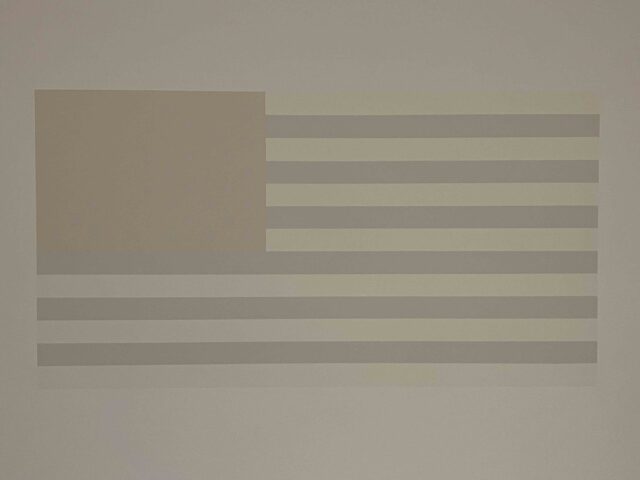
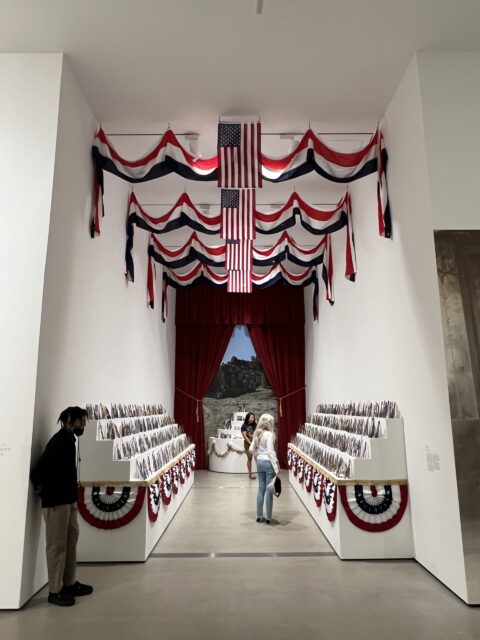
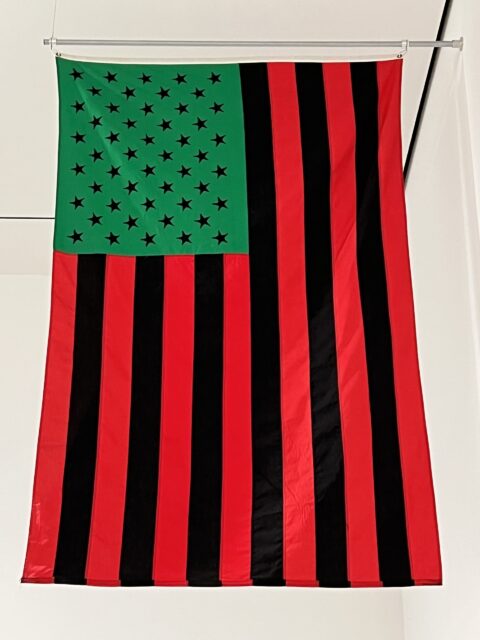
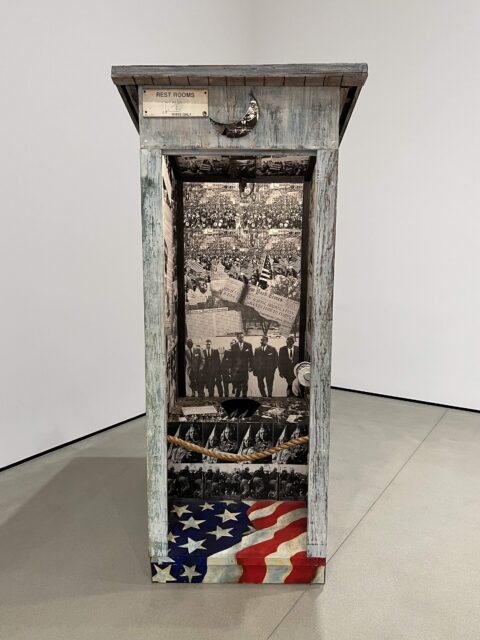
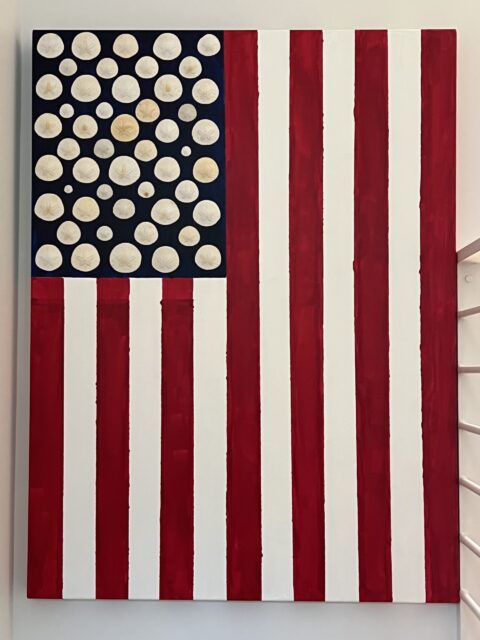
COMMENTS
Please let us know if you're having issues with commenting.